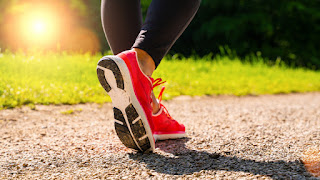The History of Walking: The Story Of How Humans Mastered Movement
Walking has been around for several thousand years, but some people might be surprised to find out how many different ways it has been used. In this article, you will learn how walking evolved from the very first steps people took on two legs and even learn about some of the first people who walked!
Introduction
Walking is one of the oldest forms of human movement and it has been around for hundreds of thousands of years. It is thought that walking may have even been used as a mode of transportation prior to vehicles. Walking has evolved over time and there are now many different types of walking that can be done, including walking on two legs, hopping, and running. The history of walking is a fascinating story that goes back to the beginning of humanity.
Origin of Walking
The history of walking can be traced back to the earliest human ancestors. Some scientists believe that humans first started walking as early as 3.5 million years ago. The ability to walk on two feet was a major accomplishment for our ancestors, and it allowed them to explore new areas and hunt for food. Over time, walking became an important way for humans to move around their environment. Today, walking is still one of the most popular forms of transportation around the world.
The First Walking Invention
The history of walking is a long and interesting one, with many important developments in the field. Here are some of the most significant milestones in the history of walking:
-The first evidence of human-powered movement is from approximately 2.6 million years ago, when humans began to walk on two legs.
-In the 1600s, doctors began to theorize that walking could be used as a form of exercise to help maintain good health.
-In 1835, Englishman John Hadley described the first known artificial device designed specifically for walking – the treadmill.
-In 1895, Dr. Jens Cornelius Capps invented the modern walker, which allowed people with disabilities to move around more easily.
-In 1932, Franklin O. Schaffner developed the Segway – an electric vehicle that was later adapted for use as a personal mobility device.
-Today, walking is one of the most popular forms of exercise worldwide, and continues to be a major source of fitness and health benefits for people of all ages and abilities.
Early Ball WALKING
The History of Walking: The Story of How Humans Mastered Movement
Humans have been walking for over 2.4 million years, and the history of walking is a story of human evolution. It all starts with early ball-walking primates, like Ardipithecus ramidus, which were the first knownwalkers. These early primates were able to move around on two legs by swinging their arms and torso in a circular motion. This allowed them to move quickly and cover large distances.
Over the course of human evolution, we've learned how to walk in different ways. Early humans started out using the same method as their predecessors, but they eventually evolved into different types of walkers. For example, early humans who lived in Africa walked on their toes, while those who lived in Europe and Asia walked on their heels. This difference in technique was due to the different types of terrain that these different regions featured.
Today, there are many different types of walkers throughout the world. Some people walk on their toes, others walk on their heels, and still others use a combination of both techniques depending on the terrain they're walking on. But no matter what type of walker you are, you can
The Rise of Running and Racing
The history of walking is a story of humans mastering movement. Starting out as simple movements that helped animals move from one place to another, walking evolved into something much more. Today, walking is a fundamental part of everyday life for billions of people around the world.
Origins of Walking
Walking first appeared in the fossil record about two million years ago. Early hominins, such as Australopithecus afarensis, used it to move around and scavenge food. These early humans weren't running or racing though- they just walked at a steady pace.
The first evidence of running comes from about 2.6 million years ago, when Homo erectus began running long distances in search of food and water. They ran faster and longer than any other human species up to that point, and theirRunning ability quickly spread through the population. Over time, Running became the dominant form of movement for humans, and Walking gradually faded away.
Walking Revival
However, Walking didn't disappear completely- it continued to be used by some groups of people for special purposes. For example, ancient nomads in Africa used Walking to transport goods across vast landscapes.
Effect of Running on the Body
Walking is one of the oldest forms of human locomotion and has a long history. The first evidence of humans walking on two legs comes from about 2.4 million years ago, when Homo erectus fossils were found with foot and ankle bones that suggest they were capable of walking on two feet. Walking became more widespread about 1.8 million years ago, when early humans began to live in larger groups and move about more freely.
Walking proved to be an effective mode of transportation, as it allowed early humans to travel long distances over varied terrains. As a result, walking quickly became one of the most important aspects of human life. The ability to walk was essential for early humans who needed to find food and shelter, as well as migrate across continents.
Today, walking remains an important form of locomotion for humans. It's a versatile mode of transportation that can be used for a variety of purposes, including commuting to work or school, traveling between places within a city, or exploring new neighborhoods. Moreover, walking has proven to be an effective way to maintain healthy physical activity levels and improve overall fitness.
Effects of Technology on Modern Disruptions in Exercise and Movement
In the early 20th century, humans were still mastering movement. The inventions of the automobile, airplane, and motorbike had only just begun to disrupt how we moved. These new technologies allowed humans to travel further and faster than ever before, but they also had a negative impact on human movement.
The automobile led to increased obesity rates, because it made it easier for people to eat out and not exercise. The airplane led to more traffic congestion, which made it harder for people to exercise. And the motorbike created conditions that were dangerous and unhealthy for pedestrians.
Fortunately, there have been movements in recent years that are trying to counteract these negative effects of technology on movement. One example is the rise of indoor cycling, which has been shown to be a great way for people to get exercise without having to go outside. Another example is the resurgence of hiking, which is becoming more popular because it is a great way to get physical activity and see beautiful scenery.




